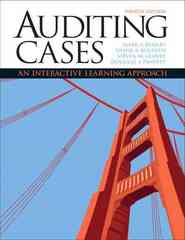The Runners Shop (TRS) was a family-owned business founded 17 years ago by Robert and Andrea Johnson.
Question:
The Runners Shop (TRS) was a family-owned business founded 17 years ago by Robert and Andrea Johnson. In July of 2008, TRS found itself experiencing a severe cash shortage that forced it to file for bankruptcy protection. Prior to shutting down its operations, TRS was engaged in the retail sale of athletic footwear and related products for runners. TRS’s 2007 audited financial statements reported net sales of $2,217,292 and a net loss of $50,980. Consistent with prior years, sales were strongest in the second and fourth calendar-year quarters, with the first calendar-year quarter substantially weaker than the rest.
The company’s basic strategy was to provide superior customer service compared to competing sporting goods and mass merchandiser retail stores. The company attempted to provide superior service by hiring college-age runners as sales staff and then training them on shoes and strategies that would correct common running ailments. This approach helped TRS develop a very loyal customer base for its first store located in Charlottesville, Virginia. Sales at the Charlottesville store was so strong that Robert and Andrea decided to expand into three other markets: Richmond, Virginia; College Park, Maryland; and Raleigh, North Carolina.
Unfortunately, the expansion effort did not go as well as Robert and Andrea had anticipated. They expected that the first three years of operations at the new locations would be difficult, but after that point they had hoped to experience significant improvement. However, the expected performance improvement did not materialize and after four years of operations the expansion stores were still running at a loss. In July 2008, Robert and Andrea, with almost all of their personal assets exhausted, realized they could no longer hang on and filed for bankruptcy protection.
BANKCRUPTCY PROMPTS CREDITORS TO SUE TRS The plaintiffs in the lawsuit are First Commercial Bank and National Bank and Trust. First Commercial Bank provided a short-term line of credit that allowed TRS to borrow up to $100,000 to cover cash disbursements for merchandise purchases prior to peak sales periods. This loan agreement required TRS to pay off its outstanding balance before the last business day in July. National Bank and Trust provided an installment loan to TRS when it expanded from one to four locations. This loan agreement required TRS to remit monthly interest and principal payments. Both lenders required TRS to have its annual financial statements audited as a condition of the loan agreements.
Unfortunately, as a result of the bankruptcy both lending institutions lost the outstanding principal balances owed them by TRS. The two lending institutions jointly filed a lawsuit against the firm that audited TRS’s financial statements, Green and Brown, LLR The lawsuit alleges that the audit firm did not perform the audit in accordance with generally accepted auditing standards and as a result the two banks were misled and were unable to recover their outstanding loan balances.
The law firms representing the defendant (Green and Brown, LLP) and the plaintiffs (First Commercial Bank and National Bank and Trust) are now conducting discovery procedures. The objectives of the discovery process are to ensure that all evidence is equally available to all parties and to facilitate settlement of the case...........
REQUIRED [1] Describe the purposes of audit documentation and explain why each purpose is important.
[2] Review Green and Brown, LLP’s audit documentation guidelines and explain why an audit firm would want to include each of the listed items in its audit documentation.
[3] Review the audit documentation prepared by Green and Brown, LLP, related to TRS’s Notes Payable and list deficiencies on the enclosed schedules.
[4] Green and Brown, LLP would not be required to comply with the auditing standards of the Public Company Accounting Oversight Board (PCAOB) for the TRS audit because TRS is a private company. Setting this fact aside for the moment, go to the PCAOB Web site and review Standard No. 3, “Audit Documentation” (see www.pcaob.org). This standard requires that documentation of audit work contain sufficient information to enable an experienced auditor not involved with the engagement to achieve two objectives. What are those two objectives? Explain whether you believe the audit documentation in this case achieves these objectives.
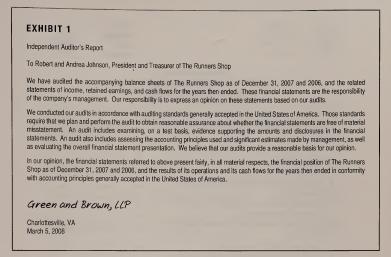
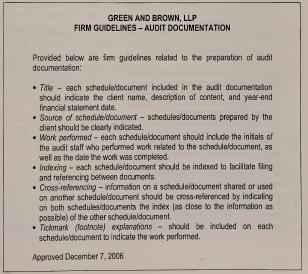
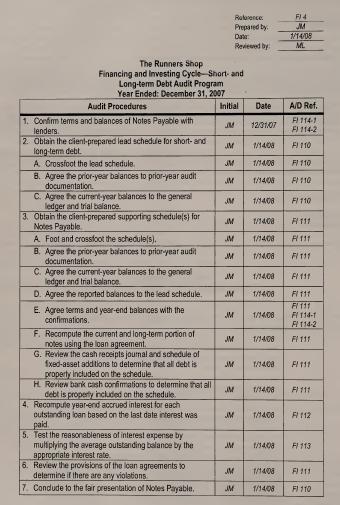
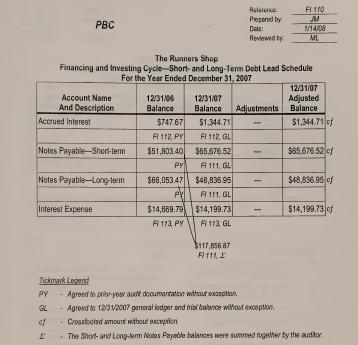
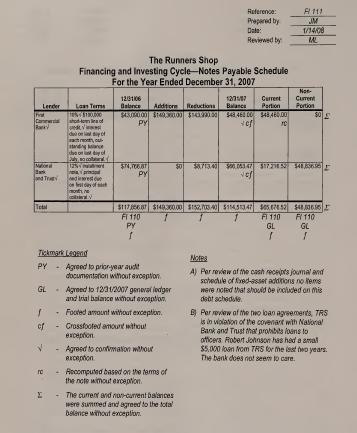
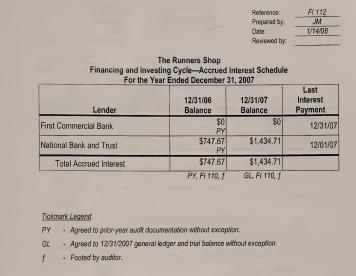
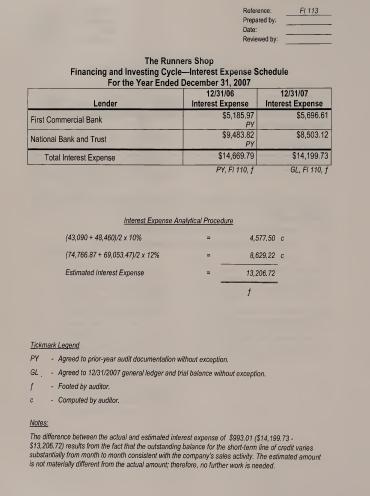
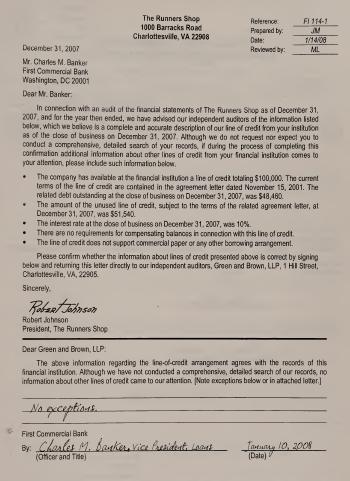


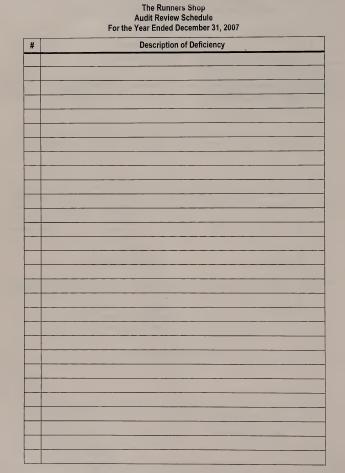
Step by Step Answer:

Auditing Cases An Interactive Learning Approach
ISBN: 978-0132423502
4th Edition
Authors: Steven M Glover, Douglas F Prawitt




